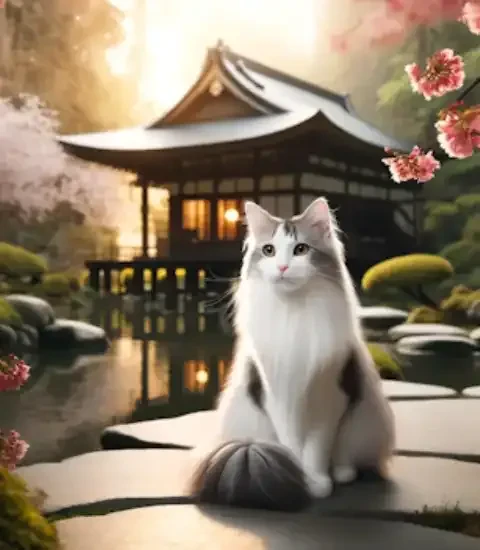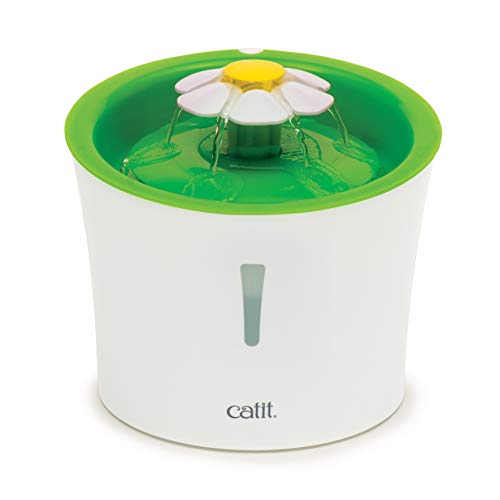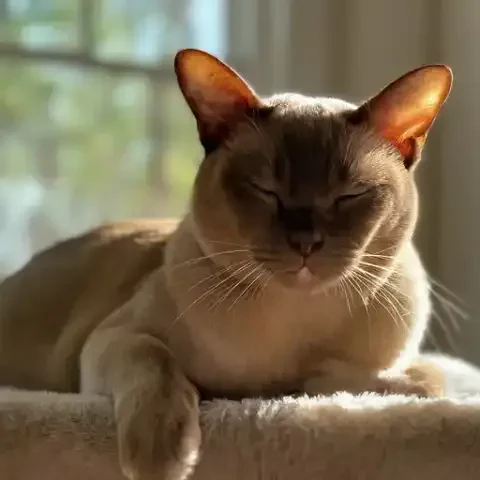Imagine a cat that embodies good fortune, not just in whispered myths and ancient legends, but in every playful pounce, every melodious chirp, and every charming bob of its uniquely abbreviated tail. This is the Japanese Bobtail, a breed that isn't merely a pet, but a living symbol of luck and prosperity, a feline steeped in rich folklore and brimming with a personality as vibrant and engaging as its distinctive appearance. More than just a cat with a notably short tail, the Japanese Bobtail is a creature of captivating charm, a breed cherished for its lively spirit, its devoted companionship, and its deeply ingrained cultural significance. Step into the enchanting world of the "lucky cat," and discover the captivating story and delightful character of the Japanese Bobtail. This is a breed that offers not just feline companionship, but a tangible connection to centuries of Japanese culture, a living embodiment of good fortune wrapped in a playful and affectionate package. In this comprehensive exploration, we will delve into the heart of what makes the Japanese Bobtail so special, uncovering the secrets of their endearing personality, celebrating their unique physical attributes – most notably that charming bobtail – understanding the best practices for their care, and tracing their fascinating journey through history and folklore as the beloved “lucky cat” of Japan.
At the heart of the Japanese Bobtail’s appeal lies a personality that is as captivating as their distinctive bobbed tail. These are cats that live life with an infectious enthusiasm, brimming with playfulness, intelligence, and an unwavering devotion to their families. To share your life with a Japanese Bobtail is to welcome a constant source of joy, activity, and deeply affectionate companionship into your home. Playfulness is practically synonymous with the Japanese Bobtail breed. They are, by nature, energetic and perpetually youthful cats, maintaining a kitten-like enthusiasm for play that often extends well into their senior years. Life with a Japanese Bobtail is rarely dull, as they infuse everyday moments with a playful energy that is both entertaining and engaging. Interactive games are not just enjoyed by Japanese Bobtails, they are a necessity. These cats thrive on engagement and attention, eagerly participating in games of chase, pounce, and batting at dangling toys. Their agile bodies and playful instincts make even the simplest toys a source of endless amusement, transforming ordinary rooms into sprawling playgrounds. Games of fetch, in particular, often become a favored pastime for Japanese Bobtails. They are surprisingly adept retrievers, readily grasping the concept of fetching toys and eagerly bringing them back to their owners to initiate another round of play. This playful energy is not just confined to designated playtime; Japanese Bobtails are often opportunistic players, turning everyday objects into impromptu toys and finding amusement in unexpected moments, constantly ready to inject a bit of fun into any situation.
Intelligence shines brightly within the Japanese Bobtail breed. These are not merely playful companions; they are quick learners, eager to please, and possess a mental agility that makes them remarkably trainable. Their intelligence manifests in various ways, from their ability to quickly grasp household routines to their aptitude for learning tricks and solving puzzles. Training a Japanese Bobtail can be a surprisingly rewarding experience. They are responsive to positive reinforcement, eager to learn new commands, and often excel at tricks such as sitting, staying, or even navigating simple agility courses. Puzzle toys are another excellent outlet for their sharp minds, providing mental stimulation and preventing boredom. Watch a Japanese Bobtail tackle a treat puzzle, and you’ll witness their focused determination and problem-solving skills as they work to unlock the reward. Their intelligence extends beyond structured learning; they are also highly observant and quick to adapt to new situations and environments. Well-socialized Japanese Bobtails can even be trained to walk on a leash, opening up opportunities for outdoor adventures and further enriching their lives with new experiences.
Communication is a key aspect of the Japanese Bobtail personality. They are known to be vocal cats, using a diverse range of soft, melodious sounds to communicate with their human companions. Far from being silent observers, Japanese Bobtails are expressive and communicative, using their voices to greet their owners, express their needs, and engage in what can only be described as feline “conversations.” Their vocalizations are often described as chirps, trills, and gentle meows, creating a pleasant and engaging soundscape in the home. Unlike some more demanding breeds, their vocalizations are generally not overly loud or intrusive, but rather serve as a charming and endearing form of communication. Listen closely to a Japanese Bobtail, and you'll hear them “singing” to you, weaving a tapestry of soft, musical sounds throughout your day, a constant reminder of their presence and their desire for interaction.
Beneath their playful and intelligent exterior lies a deeply affectionate and socially devoted heart. Japanese Bobtails are known for forming strong bonds with their families, exhibiting unwavering loyalty and a genuine desire for human companionship. They are not aloof or independent cats; they thrive on interaction and genuinely enjoy being around their people. Affection is freely given and readily displayed by Japanese Bobtails. They enjoy being petted, cuddled, and generally being close to their owners, often seeking out lap time and quietly purring their contentment. They are often described as “lap cats,” content to curl up beside you on the sofa or settle comfortably in your lap for a relaxing cuddle session. This desire for closeness is not just limited to designated cuddle time; Japanese Bobtails often enjoy participating in family activities, eager to be involved in the household dynamic rather than simply observing from afar. They are devoted companions who thrive on connection and offer unwavering loyalty and affection in return.
Adding to their overall appeal is their generally adaptable and sociable nature, making them wonderful family pets who often get along well with both children and other animals. Japanese Bobtails are known for their tolerant and playful disposition, making them excellent companions for children of all ages. They are generally patient and gentle, often enjoying the playful energy of children and engaging in games with younger family members. When properly socialized and introduced, Japanese Bobtails can also coexist peacefully and even playfully with other pets, including dogs and other cats. Their adaptable nature allows them to integrate well into multi-pet households, often forming positive and affectionate relationships with their animal companions. Early socialization remains important to ensure a Japanese Bobtail is well-adjusted and comfortable in a variety of social situations, but their inherent social grace and playful spirit make them naturally inclined to be welcoming and accepting of family members, both human and animal alike.
The most immediately recognizable and endearing characteristic of the Japanese Bobtail is, of course, their naturally bobbed tail. This unique feature is not surgically created or artificially docked; it is a naturally occurring genetic mutation that defines the breed and sets them apart from all others. The bobtail itself is not a fixed feature, but rather exhibits remarkable variability in shape and length. No two Japanese Bobtail tails are exactly alike, adding to the breed’s unique charm and individuality. Tail lengths can range from a mere hint of a kink, barely discernible beneath the fur, to a slightly longer, pom-pom like puff, or even a more curled or kinked “bunny tail” appearance. The bobtail is a result of a natural genetic variation that affects the vertebrae of the tail, resulting in a shortened and often curved or kinked appendage. This genetic mutation is unique to the Japanese Bobtail and is not related to the bobtail genes found in other breeds like the Manx. Importantly, the bobtail should be clearly visible and distinct from a normal long tail, serving as a defining characteristic of the breed. However, the tail should also not be excessively short or stubby, and responsible breeding practices ensure that the bobtail mutation does not cause any health issues or spinal problems, unlike the sometimes problematic tail gene in Manx cats.
Beneath that charming bobtail lies a physique that is both balanced and muscular, reflecting the Japanese Bobtail’s athletic and graceful nature. They are medium-sized cats, exhibiting a well-proportioned and balanced build that is neither overly cobby nor excessively slender. Their muscular bodies convey a sense of strength and agility, perfectly suited to their playful and energetic personalities. Grace is evident in their movements, showcasing a feline who is both agile and coordinated, effortlessly leaping, climbing, and playing with a natural elegance. Their legs are strong and well-muscled, supporting their active lifestyle and contributing to their overall healthy and robust build.
The head of the Japanese Bobtail is distinctively triangular and finely chiseled, contributing to their alert and intelligent expression. This triangular head shape, with its clean lines and balanced proportions, frames their large, oval-shaped eyes beautifully. Their eyes are large, expressive, and oval in shape, conveying a sense of alertness, intelligence, and gentle curiosity. Eye color can vary, depending on the coat color and pattern, but should always be clear, bright, and complementary to the overall appearance. The ears of the Japanese Bobtail are medium to large in size, set upright and alert, further enhancing their attentive and intelligent expression. Combined, these facial features create an overall impression of a cat who is perpetually engaged, observant, and ready for interaction.
The coat of the Japanese Bobtail, while often overshadowed by their distinctive tail, is also a noteworthy feature, contributing to their overall silky and refined appearance. The typical coat length ranges from short to medium, depending on the specific variety, although the short-haired variety is more common and widely recognized. The texture of the coat is consistently described as silky and soft to the touch, lacking the dense undercoat found in many other breeds. This lack of a dense undercoat contributes to their relatively low-shedding nature and further enhances their sleek and elegant appearance. Coat patterns and colors are wonderfully diverse in the Japanese Bobtail breed. While the classic Mi-Ke, or tri-color calico (red, black, and white), is particularly prized and deeply associated with the breed – and with the “Maneki Neko” symbolism – Japanese Bobtails come in a wide array of accepted colors and patterns, showcasing a beautiful spectrum of feline coat variations. Regardless of color or pattern, the coat always maintains its signature silky texture and contributes to the breed’s overall refined and charming aesthetic.
Caring for a Japanese Bobtail is generally a straightforward and rewarding experience, aligning well with their robust health and low-maintenance grooming needs. Grooming is remarkably minimal for the Japanese Bobtail. Their short to medium coat, lacking a dense undercoat, requires only weekly brushing to keep it looking its best. A soft brush or grooming mitt is sufficient to remove loose hair, prevent any minor tangles, and maintain the coat’s silky shine. Japanese Bobtails are naturally excellent self-groomers, diligently keeping their coats clean and well-maintained, further minimizing the need for extensive human intervention in their grooming routine. Bathing is rarely necessary unless your Japanese Bobtail gets into something particularly messy, making them a truly low-maintenance breed in terms of grooming demands.
Exercise and play are, however, crucial components of Japanese Bobtail care. Their playful and intelligent nature necessitates ample opportunities for both physical and mental stimulation. Daily interactive playtime is not just recommended, it’s essential for channeling their energy, satisfying their playful instincts, and strengthening the bond between cat and owner. Provide a variety of toys, rotate them regularly to maintain their interest, and be prepared to engage in active play sessions that cater to their energetic spirit. Puzzle toys are equally important for Japanese Bobtails, offering mental challenges that keep their intelligent minds engaged and prevent boredom. Climbing structures, cat trees, and window perches further enrich their environment, providing vertical territory for exploration and observation. Their love of fetching can also be incorporated into exercise routines, providing both physical activity and mental engagement through structured games of fetch.
A balanced and high-quality diet is essential for supporting the Japanese Bobtail’s active lifestyle and maintaining their overall health and well-being. Feed them a premium cat food that is appropriately formulated for their age, activity level, and life stage, ensuring it provides the necessary protein, fats, and nutrients to fuel their energy and maintain their robust health. Portion control is important, as Japanese Bobtails can be prone to weight gain if allowed to overeat and not provided with sufficient exercise. Monitor their food intake, follow feeding guidelines, and adjust portions as needed to maintain a healthy weight. Fresh, clean water should always be readily available, encouraging hydration and supporting optimal bodily functions. Japanese Bobtails are generally considered a healthy and robust breed with a naturally long lifespan. While the bobtail mutation itself raised some early concerns about potential skeletal issues, responsible breeding practices have largely dispelled these concerns. Unlike the Manx cat, the bobtail gene in Japanese Bobtails is not linked to spinal problems, and they are generally free from tail-related health issues. Like all cat breeds, they can be susceptible to common feline health issues, making preventative veterinary care essential. Regular veterinary check-ups, vaccinations, and proactive preventative care will ensure your Japanese Bobtail remains healthy and thriving throughout their life. Choosing a reputable breeder who prioritizes health and responsible breeding practices is also crucial for minimizing the risk of inherited conditions and ensuring you are welcoming a healthy and well-adjusted kitten into your home.
The ideal home environment for a Japanese Bobtail is one that embraces their energetic and interactive nature. They thrive in homes where they receive plenty of attention, interaction, and opportunities for play and activity. Families, active individuals, or households with other friendly pets are often excellent matches for the Japanese Bobtail personality, providing the social stimulation and companionship they crave. They are adaptable to various living situations, happy in apartments or larger homes, as long as their needs for interaction and activity are met. Creating a stimulating indoor environment is key to keeping a Japanese Bobtail happy and content. Provide a wealth of toys, climbing structures, window perches, and ensure ample opportunities for daily interactive playtime. Cat-proofing your home is also important, safeguarding their curious and intelligent nature from potential hazards and ensuring a safe and enriching environment for your “lucky cat” companion.
The story of the Japanese Bobtail is intertwined with centuries of Japanese history, folklore, and cultural symbolism. They are not a recently developed breed; their origins are deeply rooted in Japan, dating back hundreds of years. The Japanese Bobtail is considered a naturally occurring breed in Japan, not a product of recent selective breeding or importation. Historical documentation and artwork from centuries past, including woodblock prints and ancient manuscripts, depict bobtailed cats with remarkable consistency, showcasing their long-standing presence in Japanese life and culture. These historical records provide compelling evidence that the bobtailed cat is not a recent phenomenon but rather a naturally evolved feline type that has been present in Japan for generations.
Throughout Japanese history, the Bobtail has played various roles, most notably as a valued working cat. Prized for their exceptional mousing abilities, they were historically employed in silk farms, temples, and homes, protecting valuable silkworms from rodent infestations and safeguarding grain stores from pests. Their agility, intelligence, and hunting instincts made them highly effective natural pest control agents, earning them a valued place in Japanese society. Beyond pest control, Japanese Bobtails also found their way onto ships as “ship’s cats.” Their mousing prowess was equally valued on long sea voyages, controlling rodent populations that could damage cargo and spread disease. As ship’s cats, they also served as companions to sailors, offering a touch of home and comfort on long and arduous journeys, contributing to the breed’s potential spread beyond Japan through maritime travel.
The most significant aspect of the Japanese Bobtail’s cultural heritage is their profound association with the “Maneki Neko,” or “beckoning cat,” figurines. These iconic figurines, ubiquitous in Japanese culture and increasingly popular worldwide, are powerful symbols of good luck, prosperity, and fortune, and they are almost invariably depicted as bobtailed calico cats, strongly resembling the Japanese Bobtail breed. Maneki Neko figurines typically depict a bobtailed cat, often in the Mi-Ke (tri-color calico) pattern, with one paw raised in a beckoning gesture, inviting good fortune, customers, and wealth into homes and businesses. Numerous folktales and legends surround the Maneki Neko, all linking the bobtailed cat to acts of good fortune and miraculous events, further solidifying their cultural association with luck and prosperity. Due to this deep cultural connection to the Maneki Neko, the Japanese Bobtail itself is often considered a “lucky cat” breed, inheriting the auspicious symbolism of its iconic figurine counterpart. The Mi-Ke calico pattern, with its striking combination of red, black, and white, is particularly prized in Japanese Bobtails and Maneki Neko figurines, considered the luckiest color pattern, further amplifying the breed’s association with good fortune. This tri-color combination holds special significance in Japanese folklore, traditionally associated with good luck and the ability to ward off evil spirits. While the Mi-Ke pattern is highly prized for its cultural symbolism, all colors and patterns of Japanese Bobtails are equally loved and celebrated within the breed, each carrying the inherent charm and “lucky cat” essence of the breed.
The Japanese Bobtail’s journey to global recognition began after World War II, when American servicemen stationed in Japan encountered these unique bobtailed felines and were captivated by their charm. Returning servicemen brought Japanese Bobtails back to the United States, sparking interest in the breed within Western cat fancy. American breeders played a crucial role in establishing the breed in the West, working diligently to develop breeding programs and promote the Japanese Bobtail within cat registries in the 1960s and 1970s. Their efforts culminated in breed recognition by major cat registries, including the Cat Fanciers' Association (CFA) in 1976, and subsequently by The International Cat Association (TICA) and other registries worldwide, solidifying the Japanese Bobtail’s place in the global cat fancy. Today, the Japanese Bobtail is a beloved and well-established breed worldwide, valued not only for their unique appearance and engaging personality, but also for their rich cultural history and enduring symbolism as the “lucky cat,” a charming embodiment of good fortune and feline companionship.
The Japanese Bobtail is more than just a cat breed; it is a living embodiment of good fortune, a playful spirit wrapped in a coat of cultural history and delightful charm. Their uniquely bobbed tail, a natural and endearing feature, immediately sets them apart, while their playful and intelligent personalities captivate and engage all who encounter them. Affectionate and devoted to their families, vocal and communicative in their interactions, and adaptable to a variety of homes, Japanese Bobtails offer a truly exceptional feline companionship experience. And underpinning it all is their rich cultural heritage as the “lucky cat” of Japan, a symbol of prosperity and good fortune that adds another layer of depth and charm to this already captivating breed. Welcoming a Japanese Bobtail into your life is not just adopting a pet, but inviting a symbol of luck, joy, and enduring feline companionship into your home. Discover the Japanese Bobtail: a breed that reminds us that sometimes the most unique and cherished treasures arise from the most natural and unexpected origins. To own a Japanese Bobtail is to experience the joy of a truly lucky and wonderfully charming feline friendship.







